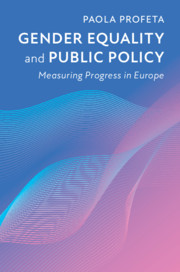Book contents
- Gender Equality and Public Policy
- Gender Equality and Public Policy
- Copyright page
- Contents
- Figures
- Tables
- Preface
- Acknowledgements
- 1 Introduction
- 2 The Scenario
- 3 From Public Policy to Gender Equality
- 4 How Women Affect Public Policy
- 5 How Women Affect Firms’ Outcomes
- 6 Global Challenges, Gender and Public Policy
- 7 Conclusions
- Appendix Useful Methods to Identify the Relationship between Gender and Public Policy
- Bibliography
- Index
6 - Global Challenges, Gender and Public Policy
Published online by Cambridge University Press: 06 April 2020
- Gender Equality and Public Policy
- Gender Equality and Public Policy
- Copyright page
- Contents
- Figures
- Tables
- Preface
- Acknowledgements
- 1 Introduction
- 2 The Scenario
- 3 From Public Policy to Gender Equality
- 4 How Women Affect Public Policy
- 5 How Women Affect Firms’ Outcomes
- 6 Global Challenges, Gender and Public Policy
- 7 Conclusions
- Appendix Useful Methods to Identify the Relationship between Gender and Public Policy
- Bibliography
- Index
Summary
This chapter considers three major global challenges and explains how they interact with gender equality and public policy - demographic, socioeconomic and technological changes. Demographic challenges such as the ageing of the population and migration flows will continue to increase in Europe. The increasing presence of women in the labour market interacts with this global demographic change, because more women at work may influence fertility rates. Similarly, migration flows may mitigate the consequences of the ageing process. At the same time, there is a constant process of socioeconomic changes: the old European continent must face the challenge of modest economic growth and increasing inequality. More women at work may be a way to increase economic output, a crucial outcome in times of slow economic growth. A major challenge is how to promote growth sustainably. Technological changes also have the potential to transform the global employment landscape. A gender divide emerges: by making possible new forms of job organization, such as remote working, the digital revolution can create more work for women and enhance women’s empowerment. On the other hand, it may represent a barrier for women who are less involved in STEM (science, technology, engineering, mathematics) educational disciplines and who therefore risk being less involved than men as primary actors in these transformations.
- Type
- Chapter
- Information
- Gender Equality and Public PolicyMeasuring Progress in Europe, pp. 122 - 158Publisher: Cambridge University PressPrint publication year: 2020
- 1
- Cited by

